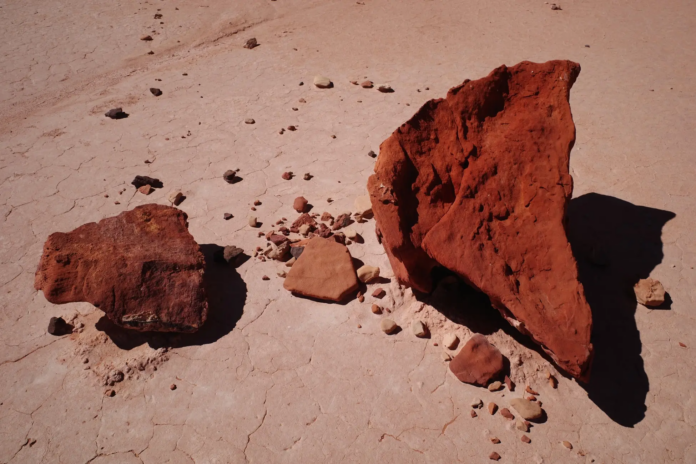A recent article by Nkosi, S. B. M., & Thembane, N. (2024) titled “Physical, chemical and biological characteristics of clays from Durban (South Africa) for applications in cosmetics” published in Analytical Science Advances, shows that clays possess qualities suitable for cosmetic applications, such as appropriate pH, color, and oil absorption.
“
Durban clays possess favorable qualities for cosmetics, promoting skin health and sustainable sourcing practices– Nkosi, S. B. M., & Thembane, N. (2024)
The study highlighted on this page focuses on analyzing the physical, chemical, and biological properties of red and white clays from Durban, South Africa, to assess their potential for use in cosmetic applications. This research delves into various attributes of these clays, such as their physiochemical and mineralogical makeup, which play a crucial role in determining their suitability for cosmetic use. The study examines clays’ pH, color, texture, and oil absorption capabilities. These properties influence the effectiveness and appeal of clays in cosmetic formulations. One of the primary advantages of using clays in cosmetics is their ability to absorb excess oil and impurities from the skin. This makes them ideal for products like face masks and scrubs that aim to cleanse and detoxify the skin. The authors explore that clays are commonly used in face masks to purify the skin by drawing out impurities and absorbing excess oils and clays can also serve as exfoliants or bleaching agents, promoting even skin tone and smoother texture. The study stresses the importance of testing clays for potential contaminants such as heavy metals. Regular monitoring and adherence to safety guidelines are crucial to ensure consumer health is not compromised. Furthermore, As clays are applied directly to the skin, they must be free of harmful levels of metals and other contaminants to avoid adverse reactions.
How the Study was Conducted
The authors collected red and white clay samples from uMzinyathi in KZN, South Africa, and purchased from informal traders at the Durban Berea Market. The clay samples were dried, ground into fine powder, sieved, and stored for further analysis. The authors employed various tests to determine the physical, chemical, and biological characteristics of the clays, including color determination, pH testing, oil absorption, swelling capacity, and more. Advanced techniques like X-ray fluorescence (XRF), scanning electron microscopy (SEM), and X-ray diffraction (XRD) were used to analyze the metal content and mineral composition of the clays. The authors further assessed SPF of the clay samples using a spectrophotometer and the Mansur equation. These methods provided comprehensive data on the suitability of the clays for cosmetic applications.
What the Authors Found
The authors found that clays possess qualities suitable for cosmetic applications, such as appropriate pH, color, and oil absorption. The authors also found that clays are free from toxic elements like As, Hg, Cd, and Se, with Pb detected below permissible levels. However, they contain metals like Fe, which may enhance UV protection. Red clay is composed mainly of Illite, Quartz, Albite, and Vermiculite, while white clay contains Illite, Albite, and Montmorillonite. In addition, authors posit thar clays did not exhibit antimicrobial activity against the tested microbial strains.
Why is this Important
Cosmetic Industry: Understanding the properties of these clays is crucial for the cosmetic industry. Clays are commonly used in skincare products due to their ability to absorb excess oil, cleanse the skin, and provide a natural feel. By assessing their suitability, manufacturers can create effective and safe cosmetic formulations.
Consumer Health: The safety of cosmetic products is paramount. The study’s focus on metal content ensures that consumers are not exposed to harmful elements. By adhering to guidelines and testing standards, companies can produce cosmetics that prioritize consumer health.
Sun Protection: The observation that these clays may enhance UV protection is intriguing. If further research confirms this, it could lead to the development of sunscreens or other protective skincare products containing these clays.
Sustainable Sourcing: By studying local clays, researchers contribute to sustainable sourcing practices. If these clays prove beneficial, their use could support local economies and reduce the need for imported ingredients.
What the Authors Recommend
- The authors suggest that cosmetic manufacturers should consider integrating these clays into skincare products due to their favorable properties. These clays can enhance oil absorption, cleanse the skin, and provide a natural texture. Formulators are encouraged to explore incorporating these clays into products such as face masks and scrubs.
- Ensuring regular safety assessments is essential. The study emphasizes the importance of adhering to guidelines and consistently monitoring metal content in facial clays. Authors posit that manufacturers should verify that the clays comply with safety standards to safeguard consumer health.
- The authors advocate for sustainable sourcing practices due to the local origin of these clays. By utilizing indigenous materials, manufacturers can support local economies and decrease dependence on imported ingredients.
In conclusion, the research conducted by Nkosi and Thembane offers promising insights into the potential of clays from Durban, South Africa, for cosmetic applications. With their favorable properties, including appropriate pH, oil absorption capabilities, and potential UV protection, these clays could revolutionize skincare formulations. By adhering to strict safety standards and embracing sustainable sourcing practices, manufacturers can leverage the natural benefits of these clays to create innovative, effective, and health-conscious cosmetic products that prioritize both consumer health and local economies.
Cite this article as (APA format):
AR Managing Editor (2024). Clays from Durban, South Africa: Ideal for Cosmetics – Study Shows Safety and Benefits. Retrieved from https://www.africanresearchers.org/clays-from-durban-south-africa-ideal-for-cosmetics-study-shows-safety-and-benefits/






 The African Research (AR) Index is a comprehensive scholarly directory and database focused explicitly on journal publishers that publish and disseminate African research.
The African Research (AR) Index is a comprehensive scholarly directory and database focused explicitly on journal publishers that publish and disseminate African research.


